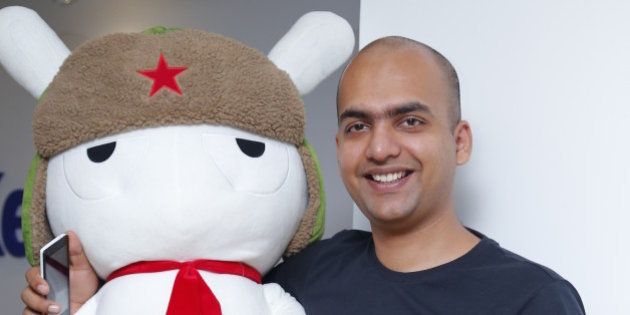
This year marked several highs for Xiaomi, with its India entry being one of 2014’s most discussed topics on Facebook. Their flash sales on Flipkart repeatedly went out of stock in under a minute. Despite sales of over a million units in India this year, it’s probably the only company with a B2C model that doesn’t have an annual target, or a retail outlet.
But it wasn’t all smooth sailing for the Chinese startup. In October, the Indian Air Force issued a privacy scare, and in December a Ericsson patent lawsuit barred the company from selling handsets in India, which was temporarily lifted a week later.
Xiaomi has been allowed to sell imported devices with some conditions - they have to be Qualcomm devices. Mediatek chipset based smartphones like the Redmi Note will no longer be imported, at least until the next hearing on February 5.
“Both the parties will present their part of the story. We are pretty confident about what our case is. We’ve presented some of these facts to the honourable court, why we believe we have the required licenses, and we will take it forward from here.” said Manu Jain, India head, Xiaomi in a phone interview with Huffpost India.

Despite these setbacks, Xiaomi is excited about its prospects for India, and the ‘Mi Fan’ community that has supported the brand. “If you go through our Facebook post on December 16, you will find more than 5,000 likes on them, and close to a thousand shares and eight hundred comments on a page that has zero marketing. The response has been overwhelmingly positive.” Jain said. “Even our call centre agents have been receiving amazingly positive calls. This gives me a very good sense of how people are taking it and supporting us. Just looking at the number of registrations from (December) 17, within four days, we'd got 200,000 registrations. We’ve had an amazing amount of traction on the launch of the Redmi Note 4G,” he added.
For their 2015 roadmap, Xiaomi India plans to set up 100 service centres in India, an R&D centre in Bangalore, start their own e-commerce operations and make strategic investments in the startup ecosystem in India.
Xiaomi has four main categories of products globally -- mobiles and tablets, TVs, routers and miscellaneous, which covers accessories and t-shirts. “In addition we have been launching products with other startups in which we leverage their technology and research. We partner and invest in them. Products like the Mi-Band are a result of these partnerships,” said Jain.

On the mobile front, Xiaomi will start with the launch of the Mi 4, slated for a launch on January or Feburary, and follow it up with a few other mobile devices. Xiaomi India will also be launching the Mi Band, an affordable health fitness tracker that’s one of the highest selling fitness bands in China. They are also excited about the launch of the Mi TV 2 - a second-generation 49-inch TV with an Android-based OS that brings a “content first” experience, just like the one you would find on an app store.
“Right now we are under very active discussions with content aggregators, we will be partnering with them to bring their content to both the mobile and TV. We want this to be treated much differently than a regular TV. We also need to figure out the after sales service and the logistics of it,” said Jain.
The success of Xiaomi’s sales strategy has many clones, which Jain thinks is a validation of their online-only strategy.
“Five months back when we were launching in India, a large number of people told me that you are making a big mistake. It is very heartening to see that a lot of other brands have either moved online, or have started focusing aggressively on online sales, or have created sub-brands for online. This is a great testimony to our core belief.
“That we can truly disrupt the market with this online-only strategy. It has its own merits. It helps us cut down on costs, reach people in tier-2 and 3 cities. Today when I see other people follow our strategy, I only feel good about it,” he said.